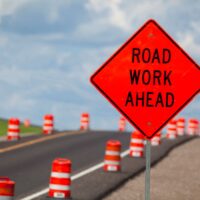State Highway Safety Report Reveals Latest Details on Serious Injuries and Fatalities on West Virginia Roads

West Virginia continues to focus on improving highway safety through the implementation of the Highway Safety Improvement Program (HSIP). The HSIP is a critical component of the state’s broader Strategic Highway Safety Plan (SHSP), which aims to reduce traffic fatalities and serious injuries on West Virginia roads. Below we look at the latest figures compiled by the Federal Highway Administration that show how the state is doing and where it can improve. If you or a loved one has been injured in a car, truck or motorcycle accident on a West Virginia highway or interstate, contact Burke, Schultz, Harman & Jenkinson to speak with a team of experienced and successful Martinsburg personal injury lawyers.
Key Safety Performance Measures
West Virginia’s highway safety efforts are measured against specific performance targets set under federal guidelines. These measures include:
- Number of Traffic Fatalities: This metric tracks the total number of fatalities resulting from traffic incidents across the state. West Virginia aims to reduce this number annually by implementing targeted safety interventions.
- Rate of Traffic Fatalities: This measure considers the number of fatalities per 100 million vehicle miles traveled (VMT) in the state. The goal is to decrease the fatality rate, reflecting safer driving conditions and behaviors.
- Number of Serious Injuries: This measure captures the total number of non-fatal but severe injuries resulting from traffic accidents. West Virginia seeks to reduce serious injuries through a combination of road improvements and driver education programs.
- Rate of Serious Injuries per VMT: Similar to the fatality rate, this metric calculates the number of serious injuries per 100 million VMT. It provides insight into the severity of accidents relative to the amount of travel occurring on West Virginia’s roads.
- Number of Non-Motorized Fatalities and Serious Injuries: This measure focuses on pedestrians and cyclists, who are particularly vulnerable in traffic incidents. Reducing fatalities and serious injuries among non-motorized road users is a priority for the state.
2022 Highlights and Progress
Number and Rate of Fatalities: Despite the recent pandemic, traffic fatalities climbed considerably from 260 deaths in 2019 to 282 losses in 2021 before dropping to 264 fatalities in 2022, bringing the five-year average close to its established target of 262.1. West Virginia set the goal of cutting the number of fatalities in half by 2030 in 2022 and 2023. This year, the state set a new target of achieving zero fatalities by 2050 through a 4% annual reduction in traffic deaths from 2021. The fatality rate, meanwhile, rose considerably from 1.36 in 2019 to 1.72 in 2022, putting the state’s five-year average at 1.600, slightly above its target rate of 1.558 for 2022.
Number and Rate of Serious Injuries: Recent data shows a large drop in the number of serious injuries from 1,180 in 2016 down to 766 in 2021. Numbers may have started trending up again, however, with 815 serious injuries reported for 2022. Still, West Virginia’s five-year average was 859.8 in 2022, well below its target of 926.4 and close to its 2023 goal of 854.8 serious injuries. For 2024, West Virginia has set an overall goal of a 66% reduction in serious injuries by 2050 through a 4% annual reduction from 2021. The rate of serious injuries stood at 5.32 in 2022, considerably higher than the previous year but ahead of schedule and only slightly above the target five-year average for 2024.
Non-Motorized Fatalities and Serious Injuries: This number dropped to a low of 72 in 2020 before starting a precipitous climb, reaching 94 in 2022. These numbers put the state’s latest five-year average at 89 serious injuries and fatalities, far above its target of 80.9. Non-motorized crashes are not an emphasis area in West Virginia’s State Highway Safety Plan, but it has set targets for 2030 and 2050 similar to the state’s target goals for serious injuries in motorized crashes.
Plan for Progress
West Virginia has generally aimed to make significant progress toward these targets through various safety initiatives, including:
- Infrastructure Improvements: Enhancing road designs, installing safety barriers, and improving lighting and signage at critical points on highways and intersections.
- Education and Awareness Campaigns: Promoting safe driving behaviors, such as seatbelt use, sober driving, and adherence to speed limits.
- Enforcement of Traffic Laws: Strengthening enforcement of traffic laws, particularly those related to impaired driving, distracted driving, and speeding.
- Data-Driven Approaches: Utilizing crash data to identify high-risk areas and prioritize them for safety improvements.
Challenges and Areas for Improvement
West Virginia faces several ongoing challenges in improving highway safety, including:
- Rural Road Safety: A significant portion of West Virginia’s traffic fatalities occur on rural roads, which often have unique safety challenges such as sharp curves, steep grades, and limited visibility.
- Impaired Driving: Despite efforts to curb impaired driving, it remains a leading cause of traffic fatalities in the state. Continued focus on DUI enforcement and prevention programs is essential.
- Non-Motorized User Safety: Protecting pedestrians and cyclists remains a critical concern, especially in urban areas where vehicle interactions with non-motorized users are more frequent.
Conclusion
The 2022 report concludes that West Virginia has met or made significant progress overall, although the breakdown reflects a mixed bag of meeting and failing to meet targets and doing better and worse than the baseline across the categories described above. Nevertheless, West Virginia’s 2022 State Highway Safety Report reflects the state’s ongoing commitment to reducing traffic-related fatalities and injuries.
Contact Burke, Schultz, Harman & Jenkinson After an Injury Accident in West Virginia
While the state continues to implement strategies to make our roads safer, we can all do our part by driving with care and attention to state and local traffic laws, adapting our driving to current road and weather conditions, and watching out for others on the road. If you’ve been hurt in a crash by a negligent, reckless or aggressive driver, Burke, Schultz, Harman & Jenkinson can help you hold the other driver accountable and secure a fair amount of compensation to help you deal with the damage they’ve done. Call 304-263-0900 in Martinsburg or 800-903-0901 throughout West Virginia to get started today with a free case evaluation.





